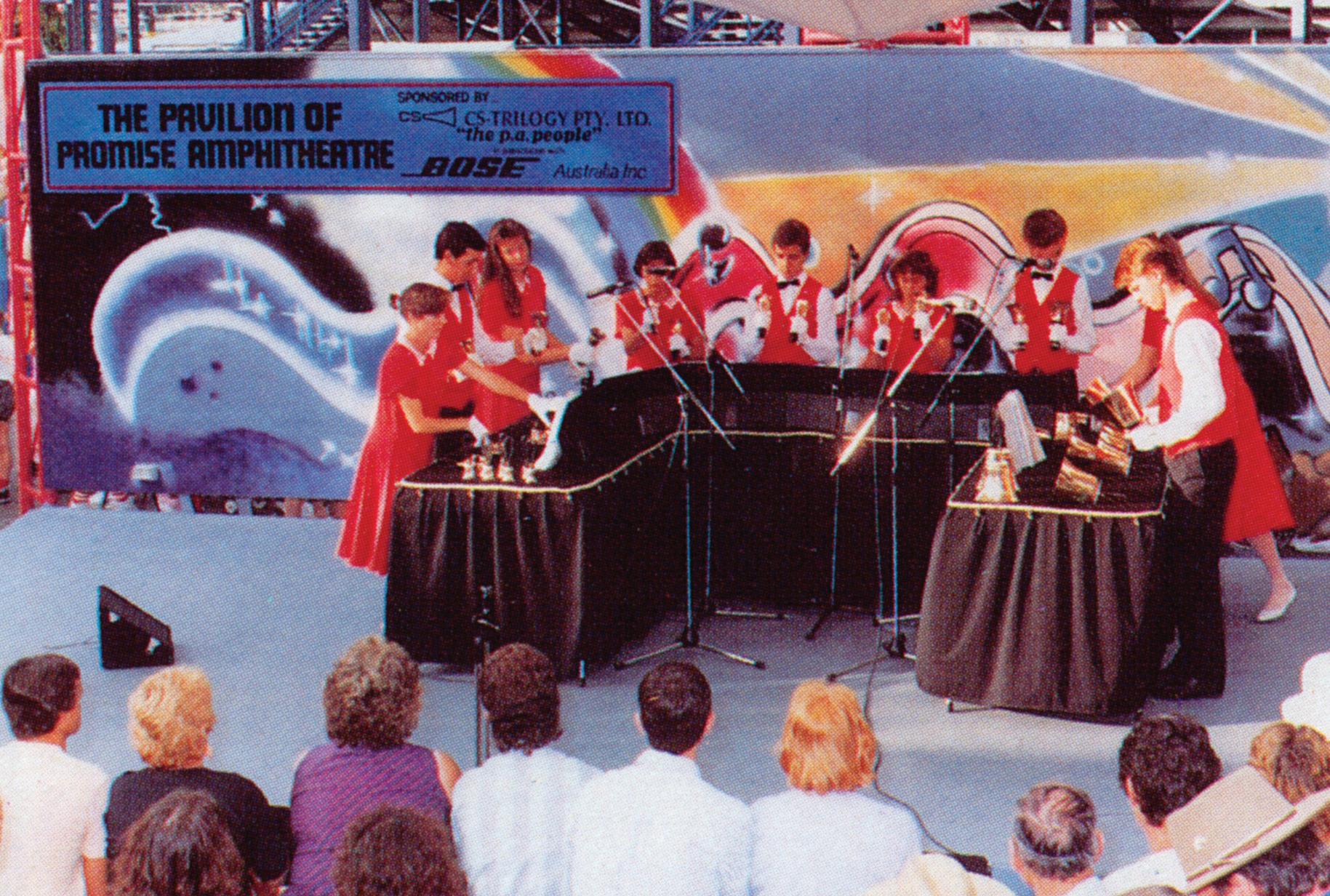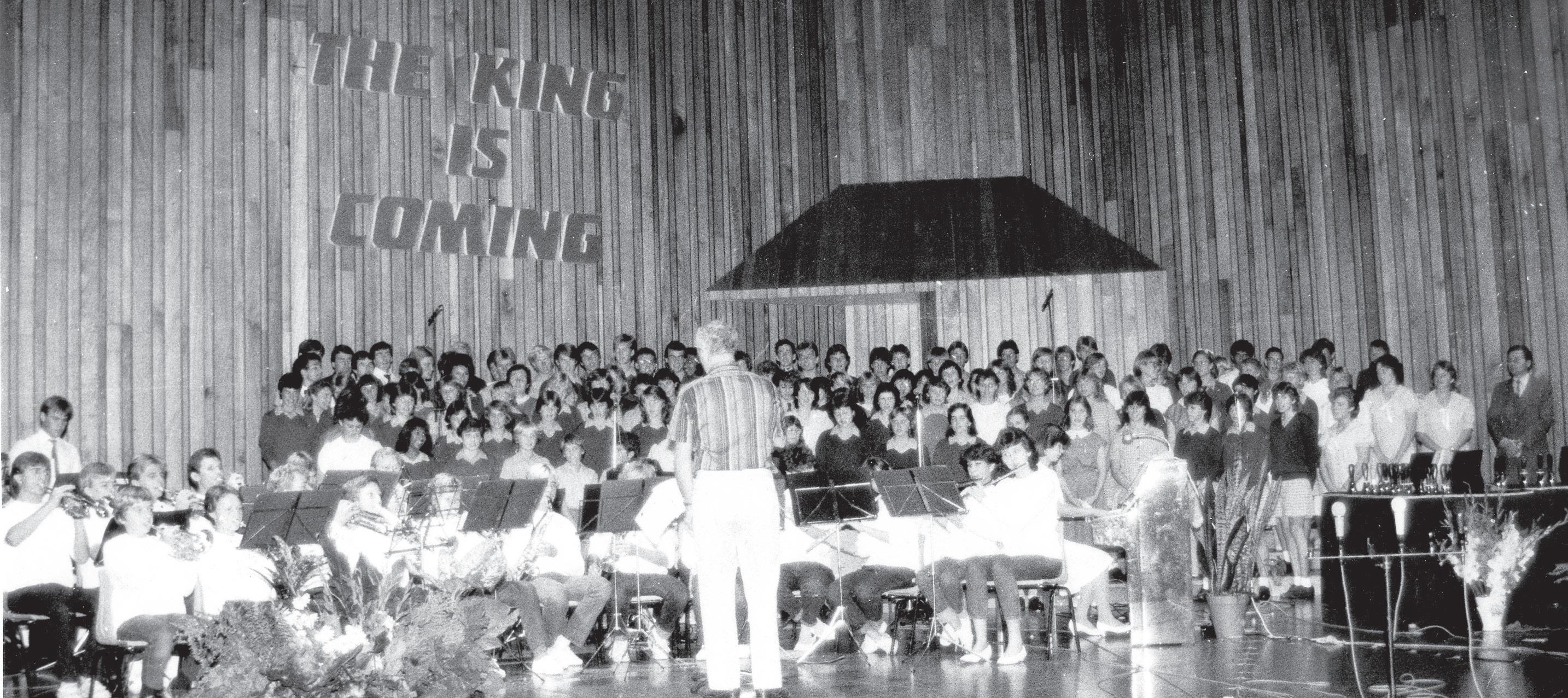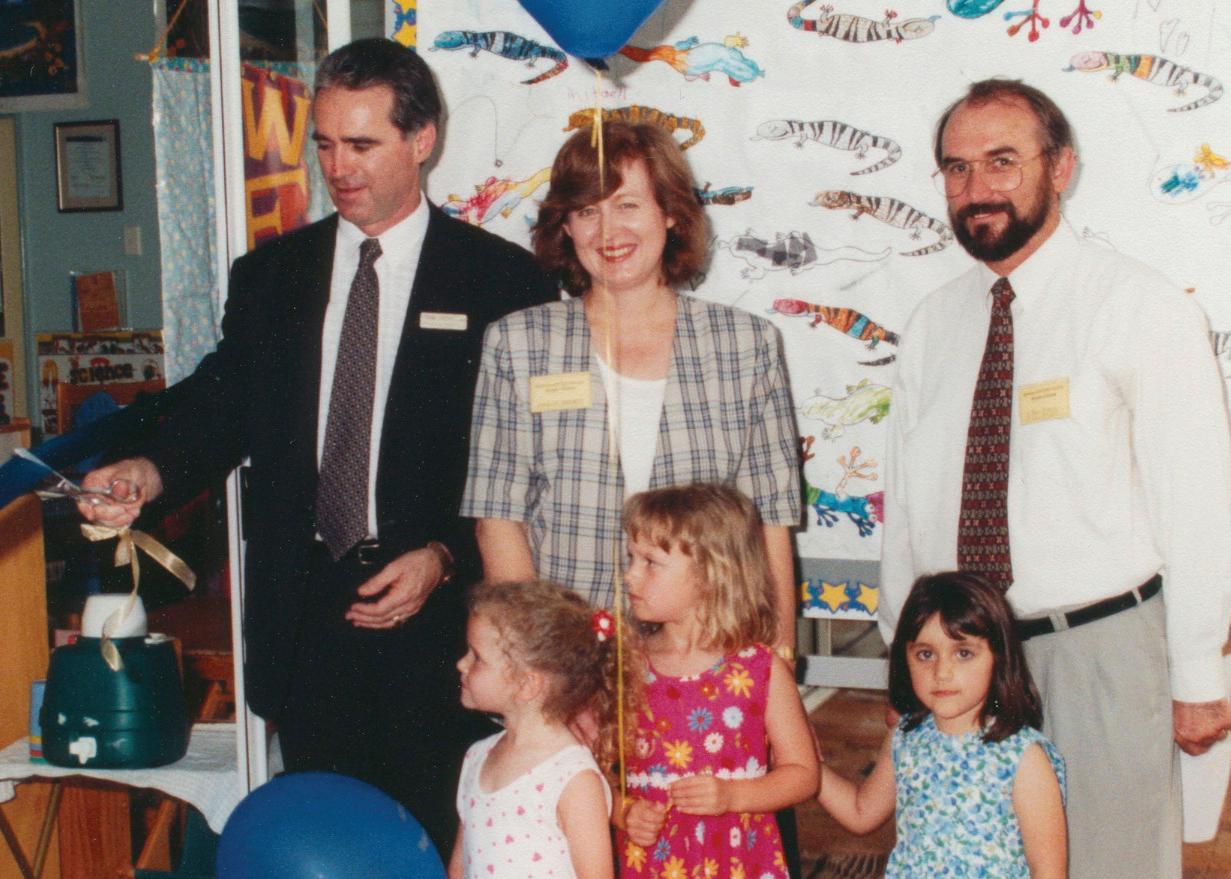
9 minute read
Manners Maketh a Man
Meanwhile what was happening on the other side of the creek? Mr Keith Dickins had been deputy principal during the last years of Cooke’s administration and was invited to take over the principalship. Dickins was an experienced teacher and administrator, having worked in the Adventist school system in almost every Australian State. Regrettably, due to ill-health his principalship lasted only two years. Nevertheless, he steered BAHS into the 1980s. Mr Lionel Hughes, as Dickins’ deputy, recalls that cultural activities were encouraged by Dickins. Teacher, Mrs Janet Dunbar, had formed a girls’ singing group, ‘New Generation’. This choir regularly visited the local churches to promote Christian education and to justify to parishioners the value of the dollars they expended. Culture was also fostered in the form of a concert held in the Macgregor State High School Hall. Students and staff pitched in to produce a quality program of music and gymnastics. Hughes recalled with pride, “as usual the students rose to the occasion and the concert was a resounding success.” Some considerable plant development also took place under Dickins. In 1982 the manual arts building was completed. It consisted of a graphics classroom, and dedicated workshops for woodwork, metalwork, and automotive studies. Apart from the advantages offered by the new block to technical studies, it assisted the school by freeing up classroom space for re-development into other specialty areas. Mr Barry Wright assumed the principalship at the beginning of 1983. Like Cooke before him, he was relatively inexperienced as an administrator when he assumed the reins of BAHS. His one and only appointment, after graduating in 1972 with a degree in the social sciences, was to the Avondale High School. He early, however, showed evidence of leadership potential and was first appointed head of the Social Sciences department, and then in 1980 as deputy principal. The judgment of those who appointed him to BAHS was fully vindicated for this youthful leader went on to serve the high school for nine years. Building on the platform laid by his predecessors, Wright lifted the profile of the annual school concert by thinking big. He hired the large Chandler Sports Complex. This venue had excellent seating capacity and very good acoustical properties. As a good administrator, Wright was ever happy to support initiatives undertaken by his teachers. For example, in 1985 teachers Mr Phillip Knight and Mrs Neroli Douglas advanced music making to a higher level. Knight in the form of a Concert Band and Douglas inaugurated a Handbell Choir. The set of instruments which constituted this Bell Choir were worth over $10 000, but had been acquired at a reduced price from a Melbourne music teacher, Mrs Judith Stanton. Mrs Stanton was happy to sell the bells to BAC Secondary as she was no longer using them and was delighted to see them continue in an Adventist school. Under the guidance of Douglas, the students quickly gained musical proficiency and in their first year gained a place in the Brisbane Music Competition for Secondary Schools. This, however, was not the end of the fame of the Handbell Choir. In 1986 the Handbell Choir applied for, and were granted, membership in the Handbell Society of Australasia and also the American Guild of English Handbell Ringers. That same year they participated in the National Handbell Festival. This was, however, only the beginning of the role they would play in bringing accolades to their school. In 1987 they toured south to Cooranbong and Sydney. They also gave public performances in the Queensland Performing Arts Centre, in City Hall, and twice appeared on TV Channel Seven. In addition they played at churches, cathedrals, weddings, and at a number of shopping centres. In 1987 they produced an audiocassette appropriately called Sacred Bells.
The following year, after an appearance on Channel O (now Channel 10), the Handbell Choir was invited to play on six consecutive days at Brisbane’s famous EXPO 88. 1988 also included a tour of Vanuatu. Concerning the group, Wright observed: “This group proved to be a powerful witness for the school and church.” In terms of public exposure, the Handbell Choir achieved more than any other single group representing Seventh-day Adventist education.
Advertisement
Bell Choir at Expo 88 and performing at The Pavilion of Promise.

The Handbell Choir was not, however, the only music-making group in the school. A junior and senior choir’s were formed as were smaller groups such as a girl’s quartet and a boy’s quartet. The latter, in 1985, gained a place in the Music Competition for secondary schools. With high student interest in music making, particularly sacred music, the school inaugurated an annual sacred concert. These were eventually held as a Vespers program at the Chandler Complex and attracted audiences of up to a thousand.
Also, at this time, several other socio-cultural traditions emerged around the Year 12 Class. Particularly nurtured by Mrs Jan Took was an annual visit south taking in Avondale College, Sydney Adventist Hospital, the sights of Sydney, and concluding at Canberra with particular focus on the Australian Parliament and the Australian War Memorial. Likewise the Year 12 Formal Dinner and morning breakfast back at the school became the celebrated way of concluding the school year for graduating students. Of a different nature, but equally important in the social consciousness of students was the school’s participation in several annual fundraising appeals, namely the ADRA Appeal, the Cancer Appeal and the Red Shield Appeal. Mr Robert Peters became closely identified with these ventures as the on-site coordinator.
Bible has always been an inclusion in the curriculum in Adventist schools. Beyond this the spiritual nurture of the students was facilitated by the appointment of a school chaplain. Pastor Ken Martin, a retired minister with a background in youth ministry, volunteered for the role in 1990. As the role developed and its value was established, the appointment became a full-time position. Yet another way of spiritual nurture was the introduction of the Week of Spiritual Emphasis. A speaker with known appeal to youth would be invited to conduct five morning sessions with the whole secondary school body and to co-mingle with the students during the rest of the day. These became highlight weeks. In addition to these features of the Wright years. The development of the physical plant continued. In a small way at first, with the installation of the port racks on the classroom walkways and the construction of aluminium outdoor seating. The aluminium extrusions were acquired as surplus from one of the Russ Hinze racetrack developments. The seats were, however, constructed by Mr Reg Morgan in the school’s Manual Department. Morgan again came to the party and with the assistance of some staff laid two concrete practise wickets.

Musical programs held at the Chandler Complex.
On a more substantial level, 1985 saw the construction of the Administration Block. On the upper level this two-storey building provided not only reception and administrative office spaces, but also a staff room and staff amenities, and student sick bays. The lower level provided space for a canteen and spaces that might be used for a variety of activities. Also, in that year work was commenced on a brick and arc mesh fence along the front of the school. While good progress had been made in the development of playing fields, there was still a need for more specialised facilities. The Home and School Association undertook to raise money for the construction of the basketball court. In appreciation of the efforts of the H&S Association, the students, under the supervision of Morgan, completed the high fencing required. The next major building project took place 1989-90 under the supervision of Mr Maurice Fairall. This was the construction of the free standing Library block which opened in May 1990. The space under the library included change rooms, an audio-visual theatrette, and facilities for the teaching of art. This was one project that very nearly didn’t happen. When the total of monies from various sources—Conference, and the State and Commonwealth governments—was computed the shortfall for the project was still in excess of $177 000. Wright turned to a man who had been a benefactor of both the primary and high schools since their respective inceptions. He approached Mr Doug Thorley, the owner of Thorley Laboratories and manufacturer of Rid insecticide products, and although the asking was large, Thorley generously agreed to meet the shortfall. BAC is certainly in debt to the philanthropic spirit of Doug Thorley. Other new developments that added to the life of the student body included the publication in 1984 of a school annual. Named ‘Reflections’, the magazine was produced by teachers and students and served as a visual memento of class groups and other significant activities during the year. Reflections is still an annual production and is one record of the history of BAC over the years. In 1985 Pastor Keith Miller was appointed as School Guidance Officer and Counsellor. Miller came from a teaching background and was eminently suited to understand the needs of young people. This appointment was an important step in providing for the deep spiritual and social needs of the student body. In 1990 retired Youth Leader, Pastor Ken Martin, was appointed as volunteer Chaplain. Several other initiatives are worthy of note. First, was the appointment in October 1986 of Mr Geoff Lorensen to care for the school grounds. Lorensen was not the first person to care for the high school grounds. Mr Alan Smith had served in this capacity for a number of years. Lorensen’s appointment, however, proved to be long term and building on Smith’s work he was able to make the school grounds and associated playing fields a major feature of the school. As a result the school community felt increased pride in their school and the local community noted the improved appearance. Second, was the appointment in 1988 of Mrs Denise Morton as part-time Learning Support Teacher. Shared with the Primary School, this innovation was intended to assist some students to cope more meaningfully with their secondary studies. One-on-one teaching can help in a manner that the best classroom teacher can not achieve. Third, sometime during the early 1980s the Duke of Edinburgh Award program was introduced. Later, under the direction of teacher, Mr Reg Morgan, this initiative became one of the best-known personal growth programs offered in the school. Finally, organised by Mr Jim Searle, BAC Secondary held its first official reunion on 31st August 1991. It was estimated that somewhere in excess of 400 past students attended which was a tribute to the affection they held for their Alma Mater. After nine years, Wright, having led Brisbane Adventist High School through some healthy growth years was given opportunity to engage in some personal growth. This involved fulltime leave in 1992 to undertake studies for a Masters in Educational Administration at The University of Queensland. He completed this in one year and was then given further leave to undertake doctoral studies. He completed his PhD in 1995.









